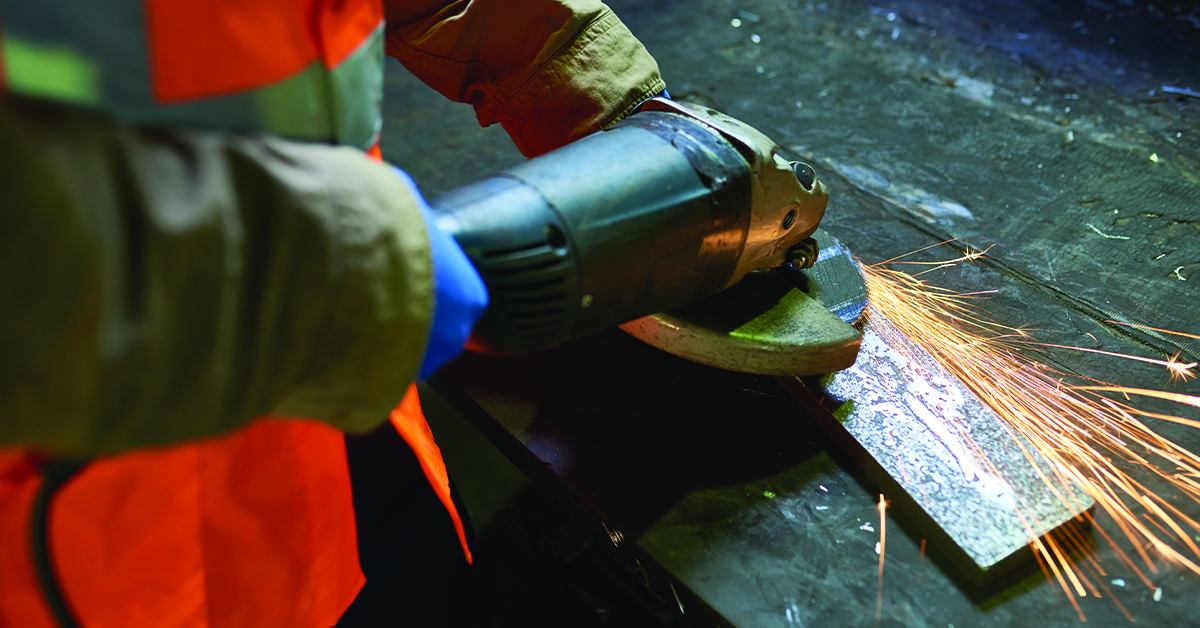
ByMartin Supply •
Eight Steps That Can Add Years to the Life of Your Power Tools
Your tools can be your most valuable asset and when they don’t work when you need them to, it can cut into production time and keep you from working on a project altogether. To keep your power tools in tip-top shape, a simple effective tool maintenance check list is all you need to get the most out of your investment.
Step 1: Cool Down Heated Tools
Overworking a power tool can put a lot of stress on its motor causing it to overheat. This typically happens when you’re working with a difficult material like concrete or sawing hard wood. Overheating can also happen when you operate a tool too long without stopping. If your tool starts to get hot, stop what you are doing and give it some time to cool down. This can prevent the motor from wearing out too soon or parts from burning out.
Step 2: Clean Tools Regularly
Power tools should be cleaned at the end of every shift and before they are stored away. Dirt and other particles can be wiped off the outside casing with a cleaning cloth. To remove particles from the tool’s vents, compressed air is the best choice. Using brushes to clean exhaust vents, could cause particles to enter the tool farther and result in damage to the tool later.
Step 3: Tool Lubrication
To keep all the moving parts on your power tools working properly, it’s a must to lubricate them. It’s best to check the tool maintenance section of your owner’s manual and follow the manufacturer’s instructions on how to correctly lubricate your tool’s model and which lubricant to use. When your tool is well-lubed, it keeps the parts from chafing, heating and corroding.
Step 4: Sharpen Tool Bits and Blades
When you use old and worn-out drill bits or saw blades you have to work your power tool even harder to get the job done. This causes additional stress on the motor which can damage parts or cause the tool to overheat. Make sure you are using the right bit for the material you are working on as that can also contribute to additional motor stress.
Step 5: Tool Calibration
Because power tools are precision instruments their moving parts need to remain in alignment. This is accomplished by re-calibrating the tool. Your user’s manual should list the tool calibration schedule. Plus, many tool companies offer calibration services for their products.
Step 6: Tool Storage
The best place to store power tools is a dry, clean location – preferably inside a case or cabinet. A case or cabinet can keep dust particles from entering the tool in vents and crevices. A moist environment can lead to problems with the electrical components and cause corrosion which can cause safety issues or cause your tool to stop working completely.
Step 7: Replace Worn Tool Parts
The longer you use your tool, some parts will eventually need to be replaced. The most common replacements are the tool’s carbon brushes, which are responsible for conducting electricity through the motor. If your tool has a drive belt, like in a belt sander or some power saws, monitor it for wear and replace worn drive belts before they snap. Power cords and switch assemblies are also parts that tend to become damaged over time and are known for needing replacements.
Step 8: Tool Battery Care
The current standard for power tools is the Lithium-ion battery. One of the most important factors to keeping your Lithium-ion battery well maintained is to manage heat. When a battery overheats, it can fry it beyond repair. The best solution is to store your battery in a climate-controlled area and avoid leaving it in places where the temperature rises – like the back of an enclosed truck. It’s also best not to let the battery run completely down before recharging it. Following a daily maintenance routine for your power tools is the best way to prevent problems down the road. Keeping your tools clean, cool and effectively oiled is a sure way to get the best performance, and investment, out of them.
If you’re in need of new power tools or just want to repair an old one, Martin can help!
Contact your Martin Sales Rep to help you find the right solution at the right price for all your power tool needs. Martin’s Tool Repair expert technicians in the Birmingham, Alabama area have decades of experience servicing and repairing air/pneumatic, electric and hydraulic tools. Contact us at 800.828.8116.

Comments for this post are closed.